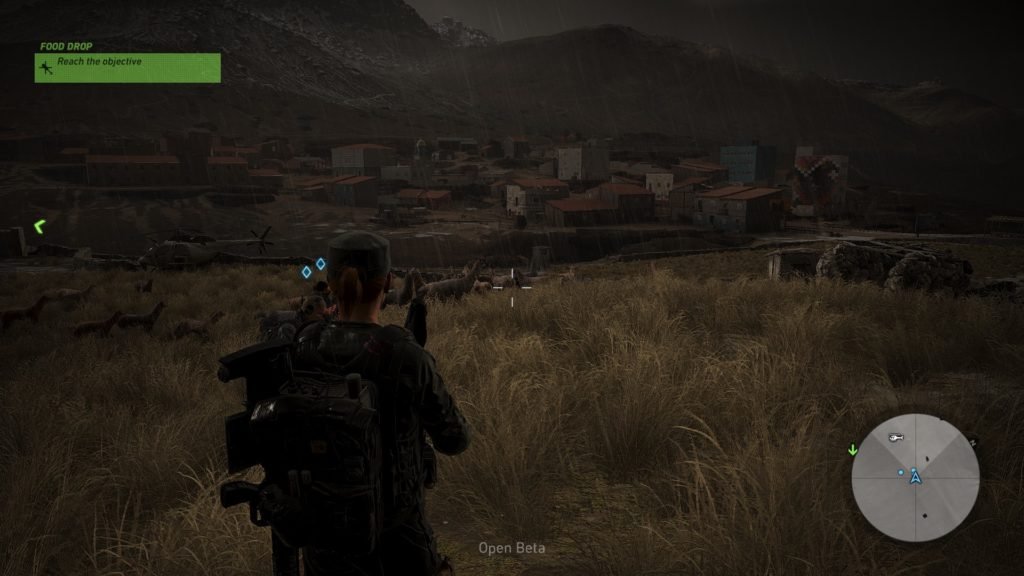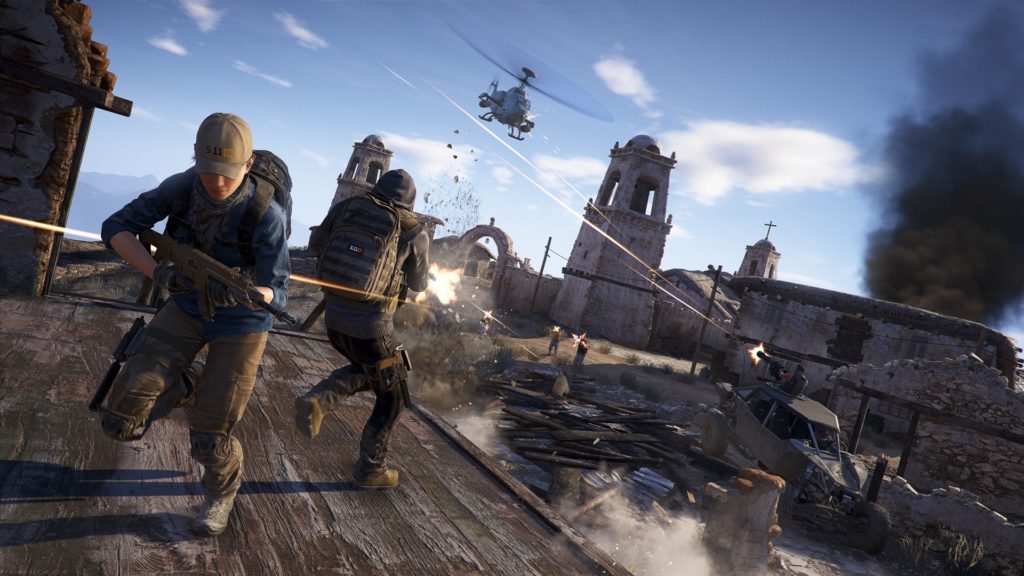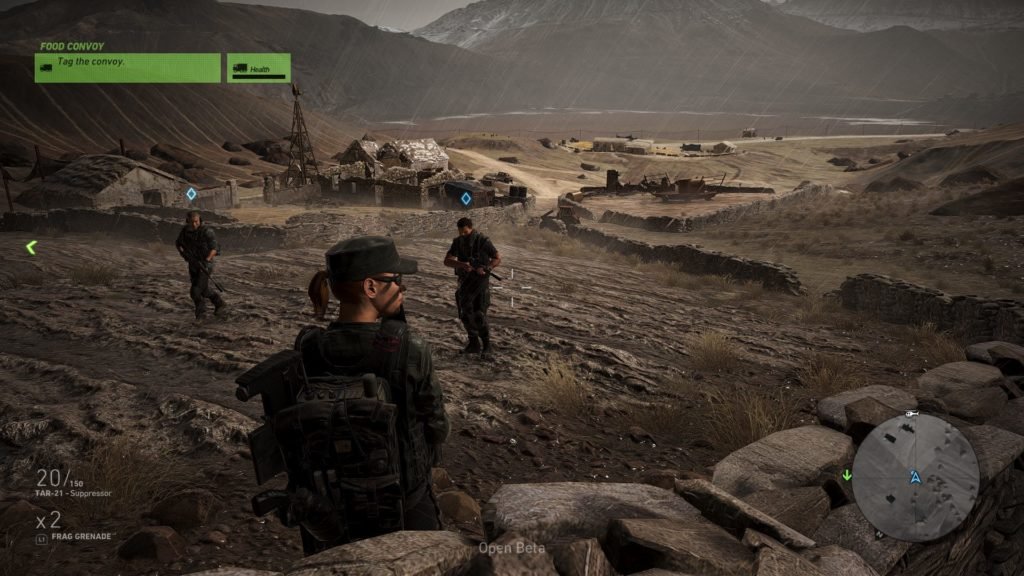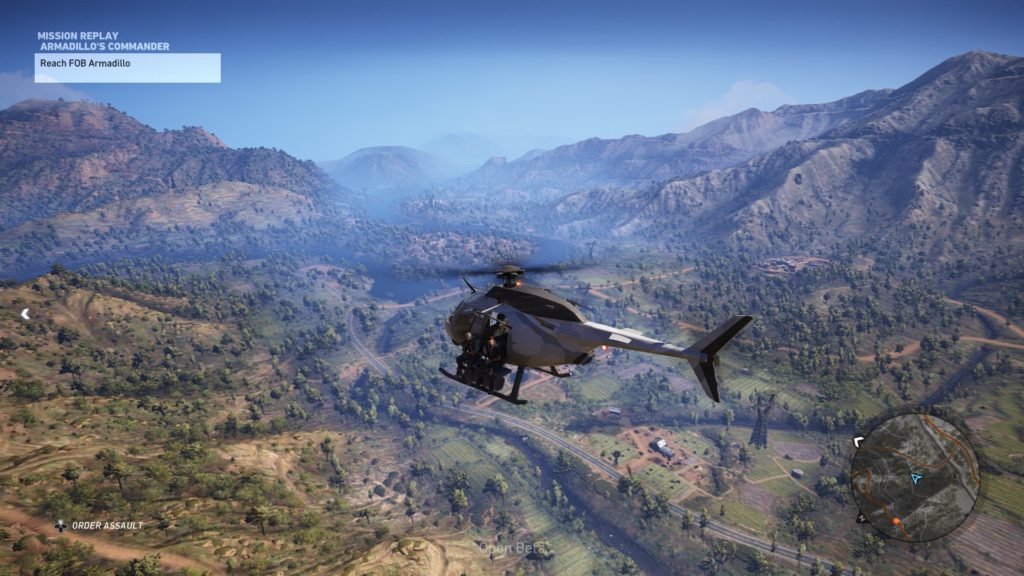Just to the northern side of Itacua, the first region featured in the Ghost Recon Wildlands Open Beta that took place this past weekend, there is the town of Yopil. As you roll up through its cramped main street, your character and squadmates take a moment to discuss the dozens of empty buildings and deserted roads. It’s a ghost town, the people supposedly all taken hostage by the Santa Blanca Cartel.
Why? That’s never explained. How do you know it was the Cartel? It’s left to the game map to tell you when you scroll over Yopil with the cursor. In fact, the buildings and setting itself do little to tell you what actually happened. Cooking fires, still lit, and all the other assets found in the game’s occupied towns, dot this one as well. Save for the simple removal of the people, it could be any town in the game. But don’t worry, there is a whistle, one of Wildlands’ collectables, tucked away in an abandoned building, the seemingly sole purpose to visit the town at all.
While Yopil is only a single Point of Interest on Ghost Recon Wildlands’ expansive world map, which is supposedly the largest in Ubisoft history, it personifies one of the core issues with the company’s latest take on an open-world. Instead of feeling wild or dangerous, Bolivia feels mostly just empty. A handful of side-missions, weapon pick-ups, and collectables speckle the map. But, outside the specific mission areas, the largely aesthetic towns and checkpoints that make up the game’s few Points of Interest are dwarfed by massive stretches of nothingness.

A muted combination of The Division, Far Cry, and Borderlands, Ghost Recon Wildlands sits well in line with the continuing trend of open-world shooters. Be it The Division’s cover-based tactical combat, Far Cry’s feeling of ‘go anywhere, do anything, in a hostile-controlled wilderness,’ or Borderlands’ focus on just having fun with three friends, Ghost Recon Wildlands borrows from each. It even has a GTA-style five-rung wanted level system for the Bolivian police forces. But when it comes to the game having a soul of its own, the Open Beta presented little in the way of the immersion, character, and depth Ghost Recon is hoping to offer.
It’s important to note, however, there is plenty of fun to be had with the newest Clancy title, especially in co-op. Flying a helicopter over an enemy base, then all parachuting out at the same time in a frantic death-from-above assault, is the type of chaotic antics that make co-op and sandbox open-world games so enjoyable. Inviting players to breach buildings together, plan out attacks, and time the perfect set of sniper shots is unquestionably where Ghost Recon Wildlands shines the brightest.
In a similar way, even when playing alone with an AI squad, it’s possible to raise the Alert level to a point that even the smallest of roadside engagements can turn into delightful hysteria. Helicopters join the fight as enemy reinforcements pour in, vehicles explode, and general mayhem ensues. It’s the kind of escalating experience a reactive open-world promises. Though it may sit a bit at odds with the more measured, stealthy side of Ghost Recon’s usual gameplay, it still works.

And on top of all of that is the fact that the game looks to appeal to anyone turned off by The Division’s more RPG elements. While the combat isn’t as robust or tight of a system as The Division’s, the time-to-kill is more reasonable, making the lethality of both you and the enemies much closer to what Tom Clancy fans expect.
Showcasing two regions of the game’s 21-region map, and roughly a dozen main campaign story missions, there was a surprising amount of content featured in the beta, giving gamers the largest look at the title so far. With the game hardly more than a week from release, the numerous bugs – everything from flying cars to vehicles being stuck at an agonizingly slow speed – would be more than enough to make fans wary. But bugs can be fixed. It is Ghost Recon Wildlands’ approach to an open-world that is worth the most consideration.
The Division offers packed, atmospheric New York streets, each and every corner littered with remnants of a visceral disaster, and another piece of the narrative in every burned-out car and smashed storefront. As flawed as many would argue the game is, consumables, crafting materials, collectibles, and loot pull you to explore and engage off the beaten path. Only in seeing the wider scope of the setting do you end up feeling the full immersion that only open-worlds can offer. The same can be said of the Far Cry games, wild animals prowling the landscape, their pelts calling you to the hunt and their very presence giving the world a greater impression of life.

In comparison, Ghost Recon Wildlands’ Bolivia comes off as unfortunately bland, and oddly dated. There is no incentive or purpose behind exploration. Unless the site of a story mission already marked on your map, Points of Interest are more often than not a collection of nondescript buildings, with two or three enemies to kill, maybe a vehicle, and little else. The hills and towns of Bolivia form a dramatic backdrop, but too little of the open-world is actually connected to the mechanics of the game.
In an attempt to feel like a living world, civilians walk here and there in all the towns, cars constantly winding along each of the roads. But it doesn’t take long for that façade to break down. You never interact with any of the civilians. You can steal their cars, drive like a maniac, or even accidentally kill one or two, all without repercussions. If you stop your car in the middle of the road, the civilian traffic AI will form perfect, orderly lines off into the distance, each car sitting patiently, waiting for the obstruction to move.
Then the question inevitably becomes, what is the point of the open-world? The tangential, GTA-inspired fun of building up your Alert level, or the co-op-exclusive diversion of watching your friend take pot shots at other cars from the trunk of yours as you drive, only do so much. While a legitimate way of enjoying a game, they contradict the tone and realistic immersion Ghost Recon is tailored towards. Ultimately, they can’t make up for what is otherwise just uneventful transitions between one mission and the next.

It’s easy to discount the Open Beta, because… well, it’s a beta. But at the same time it is worth remembering simply how close Ghost Recon Wildlands is to launch. Mass Effect: Andromeda releases a full two weeks after Ghost Recon and has already gone gold. And furthermore, Ubisoft makes no mention in either of their beta announcements of wanting feedback from players. Whether called a beta or not, this past weekend was a promotion, or in Ubisoft’s own words: “a chance to experience what it’s like to play as a member of the US Elite Special Operations team.” There is no reason to assume the company wouldn’t put its best foot forward.
Despite it’s flaws, there is no doubt the game has its moments. And the inclusion of limitless co-op alone is more than enough to place it on your radar, especially if you have a group to face down the Santa Blanca Cartel with. For those hoping for an immersive, open-world Ghost Recon title to dive into alone however, it’s possible Wildlands is better stated as a Ghost Recon title that just happens to have an open-world. For the full picture we will have to wait for the game to hit shelves on March 7.

